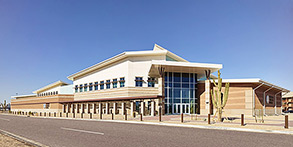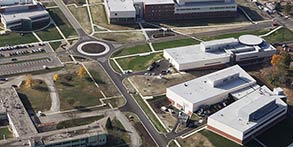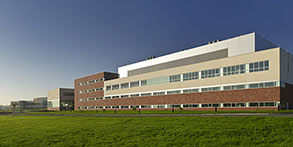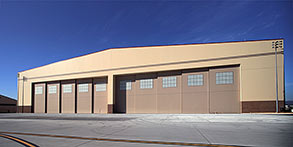Air Force Corporate Standards
Reduce the total ownership costs of facilities through the design of high performance and sustainable buildings. Balance life-cycle costs, energy efficiency and occupant benefits with budgets and mission requirements; include deconstruction.
Designate all existing and planned facilities with the appropriate Facility Group number following the Facilities Hierarchy guidance in the Overview of this AFCFS. Apply an appropriate level of facility quality and architectural features, materials and detailing based on the Facility Group designation.
Use a collaborative, integrated planning and design team, composed of user, government support staff, and appropriate professionals. Design architectural features using simple detailing to create a professional appearance; avoid extravagant or excessive detailing.
Comply with the established Installation design theme through recurring roof systems, wall systems and building entrances that reflect architectural compatibility with the Base standards and regional context.
Sustainability
Analyze climate and local and regional contexts; respond to these in the building design and properly orient buildings. Per UFC 1-200-02, evaluate the building components to determine whether passive and natural design strategies and features are cost effectively incorporated before the active mechanical systems are designed.
Respond to site analyses focusing on building orientation, configuration and massing. Select and integrate high performance and sustainable building components (e.g. roofs, walls, fenestrations, shading devices and thermal mass) into facility designs. Design the building envelope to control the transfer of these elements: heat, air, moisture, light/radiation and noise. Design each control strategy holistically and use an integrated approach.
Following UFC 1-200-02, design buildings to achieve energy consumption reduction and to protect and conserve water. Provide on-site renewable energy systems where life-cycle cost effective; consider climate, infrastructure condition, mission compatibility, and effects on base wide electrical system (grid) power quality.
Resilience
Following DoD and AF criteria analyze data and anticipate changes in the climate that will negatively affect the performance and efficiencies of facilities. Life-cycle cost effectively develop passive systems and renewable energy systems, such as ground source heat pump, to reduce energy use. Review the seismic zone designation for the location and confirm seismic requirements prior to the design of facilities.
Evaluate the potential for extreme heat and humidity and life-cycle cost-effectively provide passive systems such as increased thermal insulation, thermal mass and increased thermal shading as the first priority.
UFC 1-200-01 General Building Requirements https://www.wbdg.org/dod/ufc/ufc-1-200-01
UFC 1-200-02 High Performance and Sustainable Building Requirements https://www.wbdg.org/dod/ufc/ufc-1-200-02
UFC 3-101-01 Architecture https://www.wbdg.org/dod/ufc/ufc-3-101-01
UFC 4-010-01 DoD Minimum Antiterrorism Standards for Buildings https://www.wbdg.org/dod/ufc/ufc-4-010-01
AFI 32-6002 Family Housing Planning, Programming, Design, and Construction https://www.wbdg.org/FFC/AF/AFI/afi_32_6002.pdf








